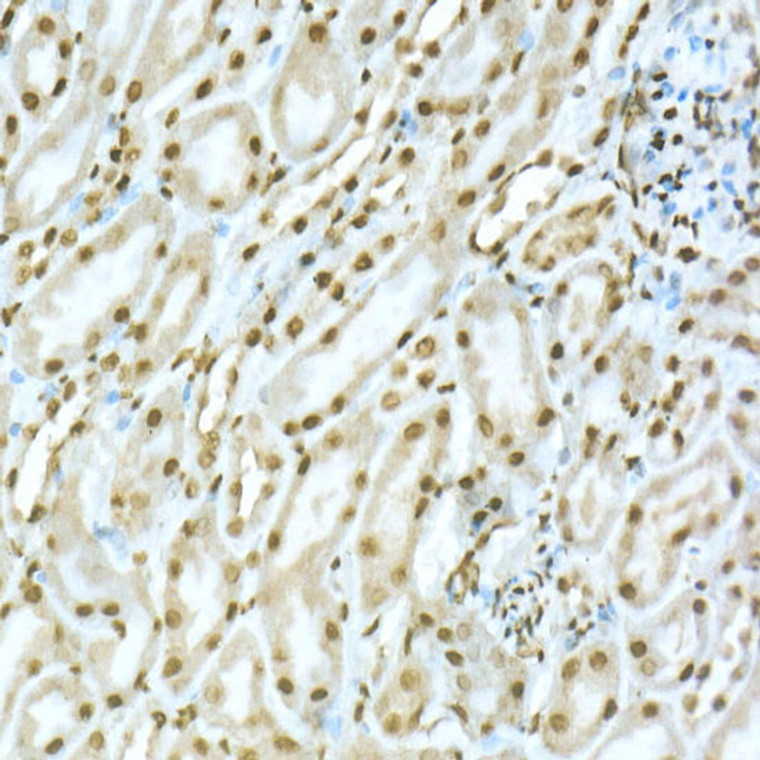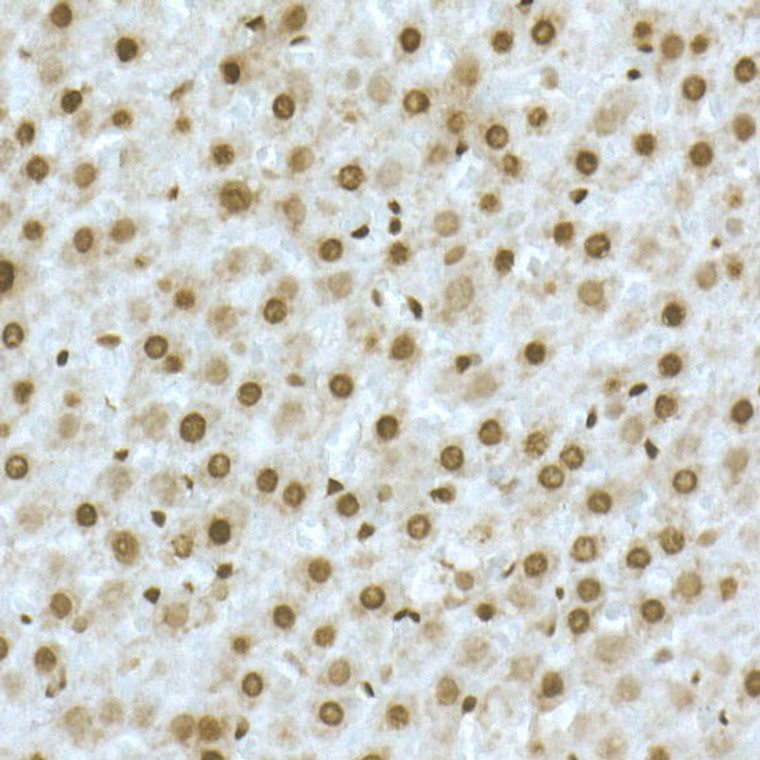| Host: |
Rabbit |
| Applications: |
WB/IF/IHC |
| Reactivity: |
Human/Mouse/Rat |
| Note: |
STRICTLY FOR FURTHER SCIENTIFIC RESEARCH USE ONLY (RUO). MUST NOT TO BE USED IN DIAGNOSTIC OR THERAPEUTIC APPLICATIONS. |
| Short Description: |
Rabbit polyclonal antibody anti-TOX (30-526) is suitable for use in Western Blot, Immunofluorescence and Immunohistochemistry research applications. |
| Clonality: |
Polyclonal |
| Conjugation: |
Unconjugated |
| Isotype: |
IgG |
| Formulation: |
PBS with 0.05% Proclin300, 50% Glycerol, pH7.3. |
| Purification: |
Affinity purification |
| Dilution Range: |
WB 1:500-1:2000IF/ICC 1:50-1:200IHC-P 1:50-1:200 |
| Storage Instruction: |
Store at-20°C for up to 1 year from the date of receipt, and avoid repeat freeze-thaw cycles. |
| Gene Symbol: |
TOX |
| Gene ID: |
9760 |
| Uniprot ID: |
TOX_HUMAN |
| Immunogen Region: |
30-526 |
| Immunogen: |
Recombinant fusion protein containing a sequence corresponding to amino acids 30-526 of human TOX (NP_055544.1). |
| Immunogen Sequence: |
YYCNKFDGENMYMSMTEPSQ DYVPASQSYPGPSLESEDFN IPPITPPSLPDHSLVHLNEV ESGYHSLCHPMNHNGLLPFH PQNMDLPEITVSNMLGQDGT LLSNSISVMPDIRNPEGTQY SSHPQMAAMRPRGQPA |
| Tissue Specificity | Expressed in NK cells. Highly expressed in tumor-infiltrating CD8-positive T cells (at protein level). |
| Function | Transcriptional regulator with a major role in neural stem cell commitment and corticogenesis as well as in lymphoid cell development and lymphoid tissue organogenesis. Binds to GC-rich DNA sequences in the proximity of transcription start sites and may alter chromatin structure, modifying access of transcription factors to DNA. During cortical development, controls the neural stem cell pool by inhibiting the switch from proliferative to differentiating progenitors. Beyond progenitor cells, promotes neurite outgrowth in newborn neurons migrating to reach the cortical plate. May activate or repress critical genes for neural stem cell fate such as SOX2, EOMES and ROBO2. Plays an essential role in the development of lymphoid tissue-inducer (LTi) cells, a subset necessary for the formation of secondary lymphoid organs: peripheral lymph nodes and Peyer's patches. Acts as a developmental checkpoint and regulates thymocyte positive selection toward T cell lineage commitment. Required for the development of various T cell subsets, including CD4-positive helper T cells, CD8-positive cytotoxic T cells, regulatory T cells and CD1D-dependent natural killer T (NKT) cells. Required for the differentiation of common lymphoid progenitors (CMP) to innate lymphoid cells (ILC). May regulate the NOTCH-mediated gene program, promoting differentiation of the ILC lineage. Required at the progenitor phase of NK cell development in the bone marrow to specify NK cell lineage commitment. Upon chronic antigen stimulation, diverts T cell development by promoting the generation of exhaustive T cells, while suppressing effector and memory T cell programming. May regulate the expression of genes encoding inhibitory receptors such as PDCD1 and induce the exhaustion program, to prevent the overstimulation of T cells and activation-induced cell death. |
| Protein Name | Thymocyte Selection-Associated High Mobility Group Box Protein ToxThymus High Mobility Group Box Protein Tox |
| Cellular Localisation | Nucleus |
| Alternative Antibody Names | Anti-Thymocyte Selection-Associated High Mobility Group Box Protein Tox antibodyAnti-Thymus High Mobility Group Box Protein Tox antibodyAnti-TOX antibodyAnti-KIAA0808 antibody |
Information sourced from Uniprot.org
12 months for antibodies. 6 months for ELISA Kits. Please see website T&Cs for further guidance












